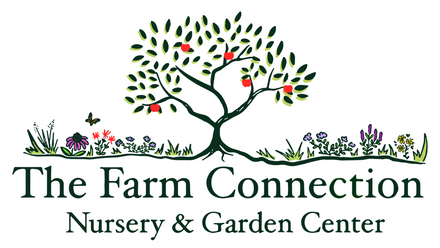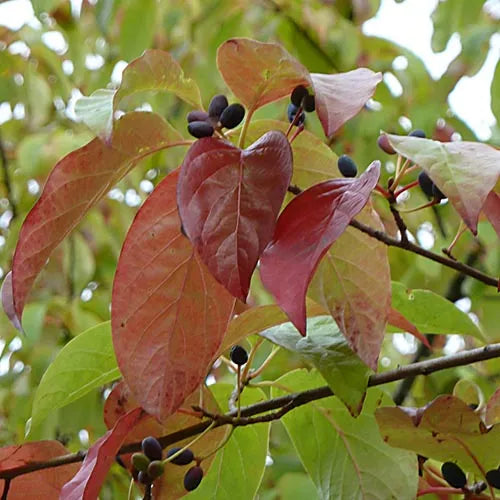Blackgum, Bare Root
Bird-Loving Tree with Fiery Fall Color
Blackgum, Bare Root - Bare Root / 6-18" Seedling is backordered and will ship as soon as it is back in stock.
Couldn't load pickup availability
Delivery and Shipping
Delivery and Shipping
Make sure to thoroughly review our entire "Shipping, Returns, Refunds, and Our Guarantee" page for all relevant details about ordering from our store.
Making a purchase from our store constitutes an agreement to all the conditions outlined in those policies.
We appreciate your support and look forward to being your favorite plant provider!
Subscribe to our newsletter
Sign up for exclusive offers.
Blackgum (Nyssa sylvatica)
Blackgum, also known as Tupelo or Black Tupelo, is a deeply resilient, long-lived native tree valued for its unmatched fall color, pollinator-friendly flowers, and exceptional wildlife benefits. Native to the eastern and southeastern U.S., Blackgum thrives in a wide range of conditions—from moist lowlands to dry upland slopes. It’s a keystone tree in native ecosystems and an ideal candidate for reforestation, silvopasture edges, streambank plantings, and diverse permaculture systems.
Key Characteristics
-
Supports pollinators with early nectar-rich blooms
In spring, Blackgum produces small, inconspicuous greenish-white flowers that are exceptionally rich in nectar, making it a favorite of native bees and a valuable early-season nectar source for honeybee hives and solitary pollinators. -
Blue-black fruit for birds and wildlife
Female trees (Blackgum is dioecious) produce small, dark blue fruits in late summer and fall, which are consumed by over 30 species of birds including woodpeckers, thrushes, and robins, as well as mammals like foxes and raccoons. -
Brilliant fall foliage for visual impact
Blackgum is renowned for its fall display—leaves turn vibrant shades of scarlet, orange, and deep purple, often on the same tree. It adds strong seasonal color to native gardens, forest edges, and restoration plantings. -
Tolerates a wide range of growing conditions
While naturally found in moist soils and along streambanks, Blackgum is also drought-tolerant once established and performs well in upland sites with poor or acidic soils. This adaptability makes it useful for both wetland and upland restoration. -
Long-lived canopy species with ecological depth
Blackgum can live for over 250 years, making it a long-term investment in biodiversity. Its deep roots and slow-growing nature help stabilize soils, sequester carbon, and support long-term forest structure.
Product Details
- Native range: Eastern and Southeastern U.S., from New York to Florida and west to Texas
- Plant life cycle: Deciduous Tree
- Sun requirements: Full sun to partial shade
- Soil requirements: Medium to medium-wet; tolerates acidic, clay, or poorly drained soils
- Mature height: 30–70 feet
- Bloom time: Spring
- Bloom color: Inconspicuous greenish-white
- USDA Hardiness zones: 4–9
Blackgum is one of the most ecologically versatile and visually stunning native trees. Whether you're planting for pollinators, birds, soil stabilization, or fall beauty, it deserves a central role in your regenerative landscape.
-
Sun RequirementsFull Sun, Part Sun/Shade
-
Soil RequirementsMedium, Medium-Wet, Medium-Dry
-
Bloom ColorGreen, White
-
Bloom TimeApril, May
-
USDA Hardiness ZonesZone 4, Zone 5, Zone 6, Zone 7, Zone 8, Zone 9+
-
Native StatesMaine, Vermont, New York, Pennsylvania, Ohio, Indiana, Illinois, Missouri, Kentucky, Tennessee, Virginia, North Carolina, South Carolina, Georgia, Alabama, Mississippi, Arkansas, Louisiana, Florida
Payment & Security
Payment methods
Your payment information is processed securely. We do not store credit card details nor have access to your credit card information.




